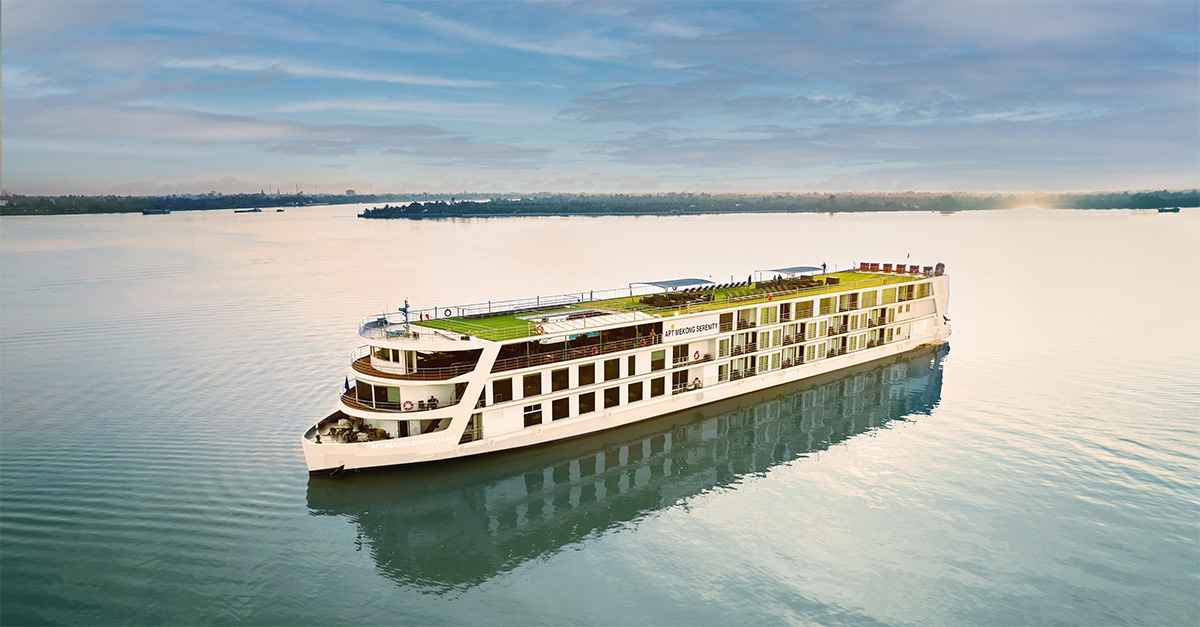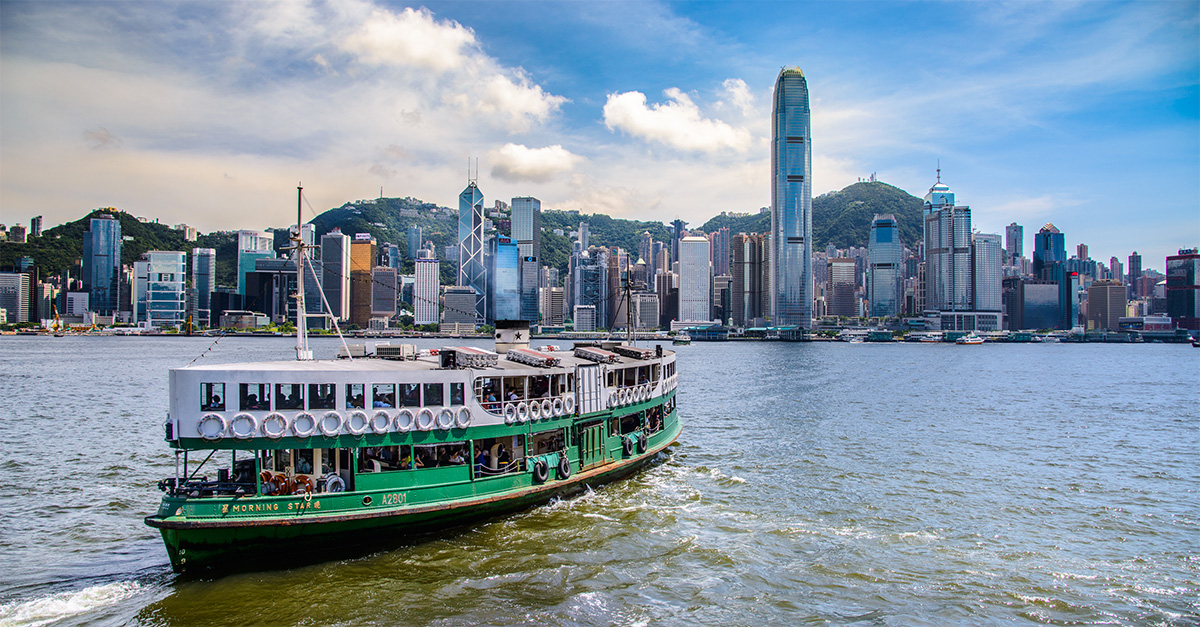Penang mixes colonial history, sandy beaches and Malaysia’s best cuisine. Joanna Booth tucks in
Like this and want more details? Click here to download and save as a PDF.
Resembling a smiling green hedgehog, the cartoon version of the durian fruit on the ‘Taste Better’ stall lulled me into a false sense of security.
Halfway down Georgetown’s Chew Jetty, our guide Rodney had stopped to point out this outlet selling produce made from Asia’s most famously stinky foodstuff. The huge, spiky-skinned fruit can smell so strongly – consensus is divided on exactly what of; I’d say drains – that they are banned from some hotels and public transport.
I knew all this, but Rodney’s encouragement, the cute cartoon and a certain sense of bravado induced me to purchase a durian custard puff. I like cake, I like fruit – what could go wrong?
The initial bite wasn’t too bad. The taste wasn’t strong, just vaguely sweet, and so I shrugged and ate the whole thing. But then a curious thing happened. Despite the fact there wasn’t a strong taste to begin with, something lingered. And developed.
Within a couple of minutes, chewing gum was all that stood between me and a nagging sense of nausea.
The durian custard puff was unique. Not just because it really is an extremely strange fruit, but because it was the only food I tried in the whole of my time in Penang that I didn’t like.
A Taste of Malaysia
Malaysians wouldn’t be surprised to hear this. The island of Penang is renowned countrywide for the quality of its cuisine – particularly its street food.
One of my companions, Malaysia Airlines UK general manager Weng Chi Lee, explained: “The standard of the street food here is so high that bad stalls just can’t survive. If you aren’t good, you close.”
Watching the early-morning crowds mill through Georgetown’s Chowrasta Market, that’s easy to believe. Shoppers pore over the fresh produce – proudly displayed in neat, orderly rows – before purchase.
A skilled ‘skin maker’ bends over a hot plate, churning out rounds of thin pancakes. Lim Kimhoe has been making these popiah (spring rolls) filled with powdered peanut and sugar, for 60 years.
Nearby, kiosks – each specialising in a different dish – are grouped around a cluster of chairs and tables. For just 50p I get a plate of char kway teow – hot noodles with bean-sprouts, prawns, mussels and egg, spiked with soy and chilli – though as it’s breakfast time many locals are sipping mugs of telur setengah masak instead.
It’s only 30p, so I try this too – two half-boiled eggs, mixed with soy and pepper to the consistency of barely-scrambled egg, and drunk.
Chowrasta Market is predominantly for locals, but in the beach resort of Batu Ferringhi, most tourists hit the street food stalls along the coast road. The Long Beach Food Court lacks a little glamour and steadfastly refuses to make the most of its sunset-facing beachside position, but that doesn’t stop hordes of Brit and Aussie families and couples pulling up the plastic chairs and ordering a feast.
Our table is laden with piles of chilli prawns, stir-fried squid and spicy chicken wings. We try Penang specialities: oyster omelette and the traditional assam laksa, which is heavier on tamarind than the more familiar coconut version.
And we taste how Malaysia’s immigrants have influenced the cuisine, from Chinese-inspired lobak – deep-fried, five-spiced pork – to roti canai, Indian flatbread served with curry. Our huge spread, including beer, costs £11 a head.
Though I’m a talented eater, I’m a terrible cook, so I feared our teacher at the Tropical Spice Garden Cooking School (pictured below) in Batu Ferringhi would have her work cut out.
I needn’t have worried. Rohana is a calm, authoritative presence, breaking down the making of spring rolls, bagadhil potato patties and spinach and pumpkin curry into easy-to-follow steps.
After an hour-and-a-half of chopping, frying, boiling and seasoning, we sit down to a hearty – and well-earned – lunch in the gorgeously lush surroundings of the gardens. Classes start from £42. 
A Blend of cultures
Though the cuisine is a draw, Penang’s recipe for tourism success is based on more than food. Those who like their beach stay with a side-order of culture are well-served here.
The island was the first British outpost in southeast Asia, established in 1786. As a centre of trade it attracted immigrants from China, India, Arabia and Europe.
Penang’s diverse history is written all over the old centre of Georgetown, and its diverse architecture led Unesco to name it a World Heritage Site in 2008.
Our walking tour starts at the wedding-cake white colonial buildings of the Town Hall (where much of the 1999 movie Anna and the King was filmed) and City Hall, with views out across the water to the cloud-capped Kedah Peak on the mainland.
Chinese influences come to the fore at the nearby Clan Jetties. Wooden platforms extend out from the shoreline, the major walkways lined with shops and narrow alleys branching off to small, wooden homes.
Established in the 19th century, each jetty is still the province of a wider family. Some are barely in existence, but the Chew Jetty is thriving, with 70 houses accommodating more than 200 families. It’s here I encounter both the fateful durian custard puff and 87-year-old Chew Chengsiew.
Sitting on her immaculate porch watching the passers-by, she’s the only member of her immediate family to still live on the jetty. Far from resenting the crowds of tourists, she says she’s pleased to see them: the majority of residents are still traders, after all.
The network of streets behind the jetties are lined with Penang Bungalows, the name given to the two-storey, brick and wooden historic buildings with spacious porches and coloured facades.
In a curiously Shoreditch-meets-southeast Asia situation, many have been converted into hipster coffee shops, and walls are adorned with street art graffiti. Rickshaws adorned with flowers weave among the traffic, and in the Little India area stalls sell samosas and chai.
Nearby, one of Georgetown’s grandest addresses is the Blue Mansion. Built by ‘Chinese Rockefeller’ Cheong Fatt Tze at the end of the 19th century, it has been immaculately restored.
Within the striking indigo walls are ornate gilded screens, courtyard water features and ornate furniture. The house is beautiful, and the story of the magnate’s life – and his many wives – fascinating.
On the outskirts of town, visitors can see Kek Lok Si (pictured below), the largest Buddhist temple in southeast Asia, and ride up to the top of Penang Hill on a steep, glass-walled funicular, for views of the city.

Image credit: Tourism Malaysia
A Sandy shore
After all that culture, it’s time to relax, and that’s what Batu Ferringhi, the beach resort on the island’s northern shore, is designed for.
It’s not a spot for total seclusion – send clients to the neighbouring, more luxury-focused island of Langkawi for that instead – but Penang’s premier resort works for those who like a lively bar or two and reasonably priced hotels.
Hotels and luxury condominiums line the coast road – Penang is Malaysia’s tech industry hub, so it’s an affluent spot for locals too – together with small shops, bars, street food courts and restaurants.
Travel 2 recommends the Golden Sands Resort by Shangri La with its Cool Zone Kids Club for families, and the Shangri-La Rasa Sayang Resort & Spa, set in 30 acres of gardens and with an extensive spa, for couples. Eight nights at the former with breakfast and flights starts from £849.
The two Shangri-La properties are most popular for Gold Medal too, but the operator reports a rise in interest for the Hard Rock Hotel, where it offers stays from £49 per person per night. The vast property, with the largest swimming pool in Malaysia, kids’ and teens’ clubs, DJ lessons and pool parties, is new to its programme.
Much more laid back is the 90-room Lone Pine Hotel, where I stayed. It’s an attractive property where the surrounding trees and gardens create a living backdrop to the public areas through the glass walls.
Rooms are light, bright and white, with a breezy feel and beach-chic decor. The pool area is a peaceful alternative to the beach, with cabanas as well as loungers, although it loses the sun in late afternoon. Rooms start from £179 per night including breakfast.
Batu Ferringhi’s beaches are pleasant but relatively crowded – for a little more seclusion clients should keep heading west. As the hotels thin out they’ll first hit the golden sand of Teluk Bahang, and after this what locals refer to as ‘the end of the island’, where the main road stops. Beyond this, walking trails criss-cross the Penang National Park, and visitors can book boat rides to a hidden beach where turtles nest.

Image credit: Tourism Malaysia
Georgetown, Penang: Where to stay
The Grand Dame
Opened in 1884, The Eastern & Oriental Hotel has a heritage almost as impressive as that of Georgetown itself. A look around the lobby reveals black-and-white photos of its illustrious former guests, from Rudyard Kipling and Charlie Chaplin through to Michelle Yeoh.
There are 100 butler-served suites in the original, low rise Heritage Wing, plus an attractive seaside pool, and another 122 in the neighbouring 15-storey Victory Annex, which opened in 2013 but retains the colonial look with dark wood and black and white marble.
Here an infinity pool on the sixth floor overlooks the bay. Rooms start from £175 per night with breakfast.
The Design Hotel
The 208-room G Hotel Kelawai opened in February, next door to the modern Gurney Plaza shopping centre. Super-modern and super-stylish, it’s one of the few spots in Penang with a rooftop bar.
Gravity, on the 24th floor, is home to a decent-sized pool as well. The hotel is a real looker, with expanses of wood and slate set off with Tom Dixon-style black and gold light fittings and Herman Miller chairs.
Alongside the beautiful bistro-style Spoon Cafe, there’s a ground-floor lounge bar called 2pm where the focus is on champagne and canapes. Even the external facade continues the avant-garde feel, lit up in a kaleidoscope of coloured lights. Rooms start from £128 with breakfast.
The Chic Boutique
Hidden away in the centre of old Georgetown, the 18-suite boutique Seven Terraces is an exquisite conversion of a row of Anglo-Chinese mansion houses.
With heritage shuttered windows overlooking the street, the suites surround a lap pool and a frangipani-filled courtyard, and are filled with lacquered furniture, embroidered silks and four-poster beds.
Modern comforts aren’t sacrificed, however, with understated flatscreen TVs and rainshowers in the black-and-white-tiled bathrooms. Double-storey and two-room suites are available. Rooms start from £103.




